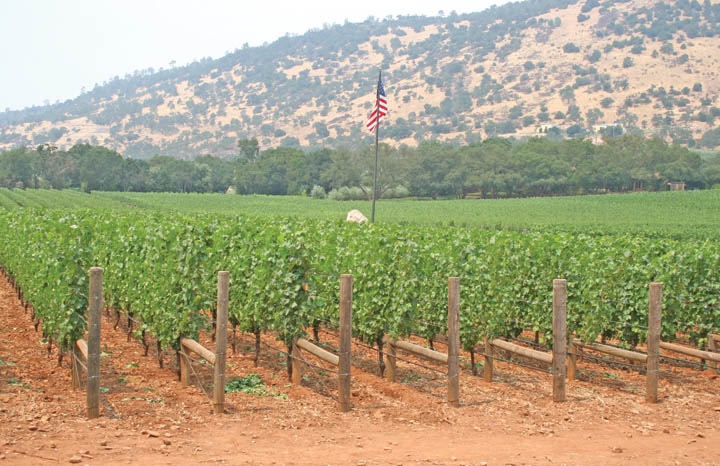
Sampling for grapevine viruses
Grapevines harbor more than 55 virus and virus‐like diseases that cause a range of symptoms from severely damaging (some killing grapevines), to others considered mild with little or no economic impact. Unfortunately, several damaging virus and virus‐like diseases are widespread in California vineyards.New vineyards planted from virus infected cuttings or budwood will be diseased from the moment they are transplanted and suffer chronic losses for the entire existence of the block.To avoid losses from virus diseases, it is necessary to avoid using infected stock in propagation.
December 13, 2010

Grapevines harbor more than 55 virus and virus‐like diseases that cause a range of symptoms from severely damaging (some killing grapevines), to others considered mild with little or no economic impact. Unfortunately, several damaging virus and virus‐like diseases are widespread in California vineyards.
New vineyards planted from virus infected cuttings or budwood will be diseased from the moment they are transplanted and suffer chronic losses for the entire existence of the block. In a diseased planting, cumulative losses are substantial because plants remain infected for life.
Therefore, to avoid losses from virus diseases, it is necessary to avoid using infected stock in propagation. Growers should only use certified planting material from California grapevine nurseries participating in the California Department of Food and Agriculture certification program.
The intensity of virus symptoms varies during the growing seasons, depending on the variety of grape (scion and rootstock) and cultural factors. Although some disease symptoms are diagnostic, the absence of symptoms is not a reliable indication that the plant is healthy. Many grapevine viruses are latent (not showing symptoms nor causing disease) under certain circumstances.
The use of propagating wood carrying these latent viruses may lead to serious disease or even vine death if a susceptible variety of rootstock or scion is used in propagating the new vines.
In many cases, the virus associated with a specific disease has been characterized and a great deal is known about the virus, its biology, and its genetic structure.
However, there are still grapevine diseases which are believed to be caused by virus and is referred to as "virus‐like" because the pathogen which causes them is still unidentified. The primary test for these diseases is that they are graft transmissible. This general class of pathogens is known as graft transmissible agents (GTAs). Many of them are latent or semi‐latent in European grapes and most American species.
Best time to sample
Autumn and winter are the best times to sample for leafroll, stem pitting and viti viruses. Vineyards suspected of having fanleaf should be sampled in the springtime for best results. Growers should look for symptoms associated with virus infections, which include but are not limited to: leaf rolling, discoloration of the leaves, reduced yields, poor fruit maturity and color and shortened canes.
Plant material samples should be taken from suspect vines, stored in paper bags and shipped overnight to a laboratory for testing. Sampled grapevines should be marked for future sampling and testing if needed.
Field indexes and/or laboratory tests are required to accurately differentiate the grapevine viruses. For more information about specific viruses, please refer to Table 1 for specific virus disease characteristics.
The University of California's Foundation Plant Services offers pathogen testing on a fee‐for service basis for viral pathogens.
Testing is performed using Polymerase Chain Reaction, which is one of the most sensitive methods for pathogen detection currently available. Testing is available for the following viral pathogens of grapevines:
• Grapevine leafroll‐associated virus (1–5)
• Grapevine vitivirus (A, B, & D)
• Rupestris stem pitting‐associated virus
• Grapevine fan leaf virus
• Grapevine fleck virus
• Tomato ring spot virus
• Arabis mosaic virus
• Grapevine rootstock stem lesion associated virus (formerly know as Redglobe virus)
For more information call: (530) 752‐3590.
For more information visit: Foundation Plant Materials: http://fps.ucdavis.edu/
UC IPM: http://ucipm.ucdavis.edu
You May Also Like



